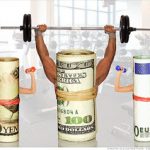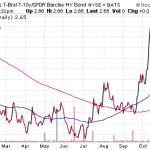Ever seeking new market directional guidance, I have taken a close look at quite a few indexes, momentum indicators, and barometers of various descriptions in my day.
And you know what? They’re basically useless, rarely outperforming a coin toss, or the throw of a dart.
However, I have lately been having quite a lot of fun following the CNN Fear & Greed Index. And you know what? It’s pretty good!
The index is expressed on a meter that looks remarkably like the engine temperature gauge on my private plane.
When the index approaches 100, it flashes “extreme greed”, and it is a great time to sell short stocks and move to a general “RISK OFF” posture in my trading book.
When it ratchets towards zero, it gives an “extreme fear” warning. This is a great time to buy stocks and move to an aggressive “RISK ON” stance.
When the index hovers around 50, there is nothing to do besides look for other new market indicators.
The last time the CNN Fear & Greed Index gave an “extreme fear” signal was on February 11, when it approached zero.
This is when I threw caution to the wind and bought the S&P 500 (SPY), even though everyone told me I was out of my mind. I have been adding to the position on every $6 handle dip. All of these trades have proved wildly profitable.
So, I decided to take a closer look at the CNN Fear & Greed Index, expecting to find some fantasy cobbled together by a 20 something on a slow night.
I couldn’t have been more wrong. There was much more than met the eye. Here are the components:
CNN looks at seven indicators:
•Stock Price Momentum: The S&P 500 (SPX) versus its 125-day moving average
•Stock Price Strength: The number of stocks hitting 52-week highs and lows on the New York Stock Exchange
•Stock Price Breadth: The volume of shares trading in stocks on the rise versus those declining
•Put and Call Options: The put/call ratio, which compares the trading volume of bullish call options relative to the trading volume of bearish put options
•Junk Bond Demand: The spread between yields on investment grade bonds and junk bonds
•Market Volatility: The VIX, which measures volatility
•Safe Haven Demand: The difference in returns for stocks versus Treasuries














Leave A Comment